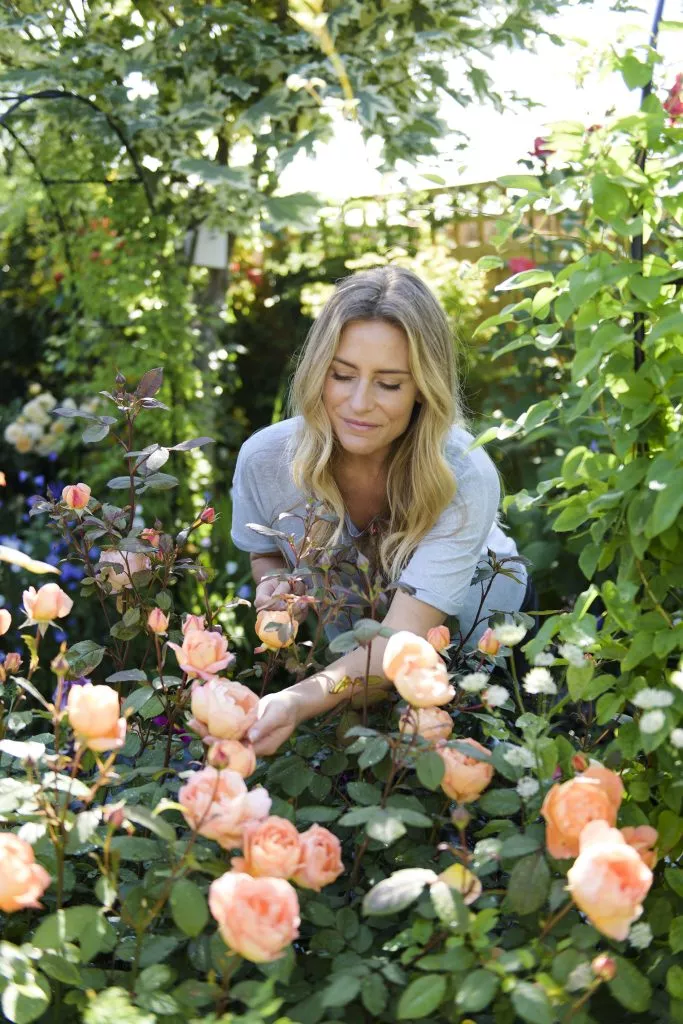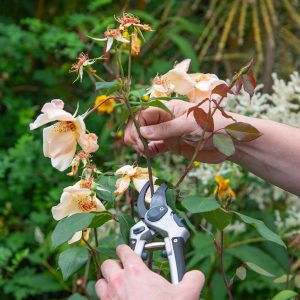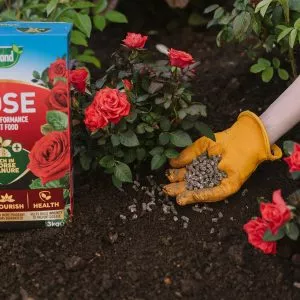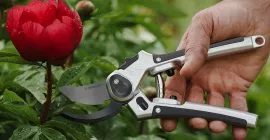Why Pruning Roses is Important
Learning how to prune your roses is essential for maintaining the health of the plant and additionally to keep them in the best possible condition. Without an annual prune, the rose may become weak, poorly-shaped and may produce smaller and far fewer blooms.

When the rose is dormant during winter, remove the dead and decaying stems. This in turn will:
- allow the plant to focus on growing the healthier parts and to produce more flowers in the next season
- helps to prevent disease on the plant. Because by taking away the old decaying parts you are also taking away any potential food sources and hiding places for pests. Particular problem pests include rose aphids, rose leaf rolling sawfly and rose large sawfly.
- helps to boost air circulation around the plant, which helps to ward off any fungal growth or disease.
- will help you to maintain the desired shape of the plant. With some roses, particularly climbing roses, you may need to untangle the stems to encourage the rose to flower and grow in the right direction.
When to Prune Roses
For most roses, it is best to prune roses during late winter usually between mid to late February. If it has been a particularly cold or long winter, wait until March or when the first signs of spring start to appear. Pruning in winter means there are only bare stems and little or no foliage. This makes it easier to shape the rose and to spot any areas that may be diseased.
Climbing and rambling roses should be pruned during late autumn or early winter after the flowers have faded.
Shrub roses that flower once during the growing season should only be pruned in late summer after the flowering is finished. Shrub roses that flower throughout the season should be pruned in late winter.
How to Prune Roses
What you’ll need…
- A sharp pair of secateurs, pruning shears or long-handled (gauge what tool you need depending on the size of the rose). Try our sharpest, hardest Eversharp Secateurs
- A thick pair of gloves

Steps to take in late Winter…
- Use a sharp, clean pair of secateurs or pruning shears
- Remove any debris away from the base of the plant (e.g. dead leaves, grass, moss and anything that might harbour insects and disease)
- Make all your cuts are no more than 5mm (1/4 in) above a leaf bud that faces outwards from the plant.
- Make sure that you create clean cuts on a slanted 45 degree angle. This allows water to drain away. Try not to let water collect in any ragged cuts as this will help to prevent any breeding fungal disease.
- Try not to make any ragged cuts, as this will let insects and disease into the plant and, again, open it up to infection.
- Take off any stems that are broken, dead, and diseased or generally look old and woody. You only want to be left with green, healthy stems.
- Remove any thin branches that are thinner than a pencil
- Open up the plant by removing any branches that cross through the centre or rub together.
- When cut, the inside of the stem should be white, not brown. If it’s brown, cut back the further until you see that the plant tissue is white.
- Pull off any suckers that are below the graft.
- Remove any leaves that are still remaining as this will allow the plant time to adjust
Spring
In spring, feed all pruned roses with a general purpose or specialist rose fertiliser. It is also a good idea to mulch the soil with garden compost or manure to give the plant its needed boost of nutrients at the start of the growing season. Westland Rose Food is perfect for the job. Because it is made from horse manure it is naturally rich in nutrients for bigger blooms and stronger plants.

Summer
Dead flowers can be cut back at any time during the summer months. During the flowering season, deadheading roses will encourage more blooms. Additionally it will help to maintain the attractiveness of the plant for the rest of the season.
Autumn
After the first frost, stems will need to be trimmed to prevent them from snapping during the strong windy weather that autumn may bring. Ensure that rose bushes are not top heavy to protect them from being uprooted in strong winds. Crossing branches that could be damaged by rubbing together should also be trimmed back. Be very careful and don’t be too harsh as pruning can stimulate growth, and new growth may be damaged by freezing weather. Remember to wait until late winter to annually prune the rose harshly once the first signs of spring are upon us.




